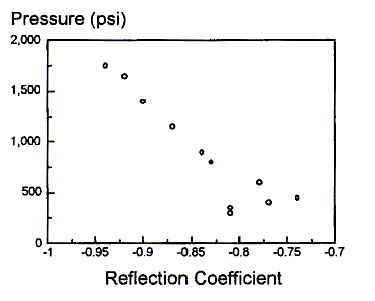The test is performed by sending a pressure pulse down the wellbore (from the wellhead), and then analyzing the frequency response of the consequent wave train. HIT has been successfully used to determine fractures in numerous injection wells (Paige, et al., 1992)1 and the method is reported to work in both poorly consolidated and more consolidated formations (Paige et al., 1993).2
Key Issues
| Applications | How It Works | Procedures | Pros and Cons | References |
Key Issue 1: Applications
| Recommendation 1.1: | Consider using HIT to determine: |
|
|
|
|
|
Key Issue 2: How It Works
| Recommendation 2.1: | You can explain HIT to someone by saying: |
|
|
|
|
|
Key Issue 3: Procedures
| Recommendation 3.1: | There are some operational considerations. |
|
|
|
|
|
Key Issue 4: Advantages and Limitations
| Advantages: | The advantages of this test procedure include:. |
| Current Limitations: | Be careful with the following: |
|
|
|
|
|
References
- Paige, R.W., Roberts, J.D.M., Murray, L.R. and Mellor, D.W.: "Fracture Measurement Using Hydraulic Impedance Testing," SPE 24824, 1992.
- Paige, R.W., Murray, L.R. and Roberts, J.D.M.: "Field Application of Hydraulic Impedance Testing for Fracture Measurement," SPE 26525, 1993
- Holzhausen, G.R. and Egan, H.N.: "Fracture Diagnostics in East Texas and Western Colorado Using the Hydraulic Impedance Method," paper SPE 15215, presented at SPE 1986 Unconventional Gas Technology Symp., Louisville, KY (May 18-21).
- Wylie, E.B. and Streeter, V.L: Fluid Transients, FEB Press, Ann Arbor (1982) 384 pages.
- Holzhausen, G.R. and Gooch, R.P.: "Impedance of Hydraulic Fractures: Its Measurement and Use for Estimating Fracture Closure Pressure and Dimensions," SPE/DOE 13892, Denver, CO (May 1985).
- Simpson, A.J. and Paige, R.W.: "Advances in Forties Field Water Injection," SPE 23140, paper presented at the Offshore Europe Conference, Aberdeen, Scotland (September 3-6, 1991).
- Sneddon, I.N., "The Distribution of Stresses in the Region of a Crack in an Elastic Solid," Proceedings of Roy. Soc. A, (1946) 187-229.
- Clifford, P.J., Mellor, D.W. and Jones, T.J.: "Water Quality Requirements for Fractured Injection Wells," SPE 21439, paper presented at the SPE Middle East Oil Show, Bahrain, (November 16-19, 1991).
- Paige, R.W. and Murray, L.R.: "Produced Water Re-Injection -Field Experience and Current Understanding," venue unknown.
|
|
|
|
|
